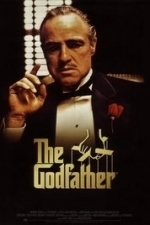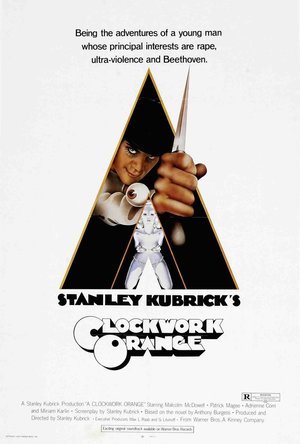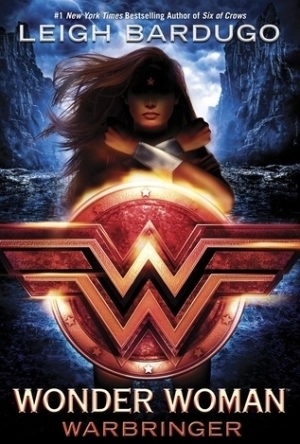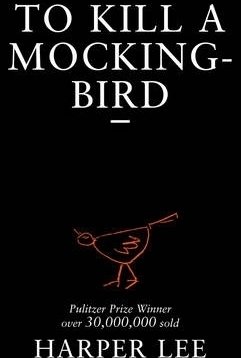
Last Day Survival:Survivor
Games
App
Last Day Survival:Survivor is a free end zombie survival strategy, with only one target for all...

AutoRap by Smule
Music and Entertainment
App
Say something. AutoRap turns your speech into rap. Choose from 100+ beats from artists like Drake,...

Lollipop - Gay Video Chat
Social Networking and Lifestyle
App
Meet men through gay video chat with Lollipop. Free and anonymous video gay dating. Lollipop is the...
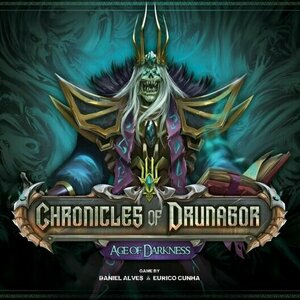
Chronicles of Drunagor: Age of Darkness
Tabletop Game
Daren has always been a land mired in conflict – from the moment the Mortal Races met in its...
Phillip McSween (751 KP) rated The Godfather (1972) in Movies
Dec 3, 2018
Acting: 10You couldn’t ask for a better cast than within that of The Godfather. Brando captures your attention from jump, smooth yet broiling with passion. He comes off as the type that can handle any situation but doesn’t need to do so to prove himself.
Pacino is phenomenal in his role as Michael. You can feel the weight of his innocence as he finds himself in the middle of things he vowed to stay away from. One of my favorite scenes involves him having to kill someone in a restaurant. When he goes to the bathroom to grab the gun (where it’s stashed in a stall), he is pacing and nervous. As a viewer, you can sense his struggle. He knows that once he does this, there is no going back. It’s incredible to watch his transformation over time as he ascends to power. You can see him becoming what his father was.
Beginning: 10
Characters: 10
Vito and Michael are just a taste of the rich characters that keep the film fresh even to this day. You’ve got Sonny the firstborn, quick to drop a hit or do whatever it takes to protect his family. You find out exactly what that means when he confronts his sister’s abusive husband in the streets threatening to blow his head off.
Then you have a guy like Tom Hagen, the soft-spoken consigliere of the family. He brings a voice of reason to the chaos surrounding the Corleone family. He wants badly to be an official part of the family but can’t because of his Irish descent. As a result, it makes him work twice as hard.
These characters aren’t just one-dimensional, but they carry enough layers to singlehandedly move their own story. Through each of these characters you understand what it means to be a Corleone and how each of them play a specific part to complete the whole.
Cinematography/Visuals: 10
Conflict: 10
If the characters are what enhance the movie, conflict is what ultimately drives it. Sometimes the intensity is subtle while other times it’s loud and boisterous. It’s always there because you understand as a viewer that lives are always on the line, always at stake. The mafia families are playing for power and, most importantly, they are playing for keeps. There are so many great action sequences that stick out in my mind. There is no shortage of death and every death in this film comes with a meaning and a price.
Genre: 10
Memorability: 10
Pace: 10
When a movie is pushing three hours or goes 3+, I’m usually thinking how they could have shortened things. Not only was the runtime necessary here, but The Godfather runs at a consistent smooth pace. It manages itself by keeping you on high alert in some scenes then reining you back in for the next scene.
I remember watching one intense scene where Michael was protecting his father in the hospital. I remember thinking, “Thank God the entire movie is not like this! I would have a heartattack.” Though the film is long, I would have gladly watched another hour if it had been tacked on.
Plot: 9
Enough of the love fest. Time for my one itty bitty gripe. There were a couple of occasions where I found it difficult to keep up with the families, in some cases the Corleones themselves. The plot tripped me up in spots but it was nothing close to ruining an amazing experience.
Resolution: 10The ending of this film is one for the ages, a powerful scene that will stand out in your mind for a long time. It’s the passing of a torch, but the way is unfolds is just so damn cool! I don’t want to ruin it for those that haven’t seen, but for those that have, you know exactly what I mean.
Overal: 99
Classic. I can’t believe it took me this long to watch it. I have to say, it was well worth the wait.

Coping with Chloe
Book
Anna and Chloe are twins. They share everything. Even Chloe's terrible accident hasn't split them...
Chris Sawin (602 KP) rated A Clockwork Orange (1971) in Movies
Jun 15, 2019
Alex is promised that he'll be a free man within a fortnight. The treatment consists of a drug known as Serum 114 being injected into the patient before making them sit through short films such as a man being beaten to a pulp, a woman being the sexual victim of several men, and a Nazi concentration camp film set to the soundtrack of Beethoven's ninth symphony. Alex begins to feel sick during the films and the doctors insist that it's part of the cure. Alex's love for music and Beethoven in general become one of the adverse effects of the treatment as the ninth symphony has the same effect on Alex as the urge to beat or rape someone would. Alex soon comes to realize that you can never go home again and that being a free man isn't all it's cracked up to be, especially after a treatment such as this.
It took 37 years after its initial theatrical release and 24 years of being alive on this planet (the original viewing of this film was in 2008) to finally get around to seeing A Clockwork Orange. The film starts and it makes the viewer feel like they've missed something entirely that everyone else already knows about, but as the film unravels it snowballs into a unique vision of cinema. There are shades of Altered States in A Clockwork Orange, but A Clockwork Orange feels much more polarizing in its presentation in comparison. Stanley Kubrick tries to shine this spotlight of beauty onto the most heinous of actions as the film’s classical score becomes the soundtrack to ferocious and almost inhuman desires. This is Kubrick’s adaptation of the 1962 novel of the same name written by Anthony Burgess and it’s incredible how the film is able to remain captivating over a two hour period.
The film has a stunning restoration on the two-disc Blu-ray anniversary edition. Kubrick always had a brilliant eye when it came to perspective and camera placement; the majority of that could be contributed to Kubrick’s frequent collaborations with cinematographer John Alcott. The long hallway shots and close-ups on memorably haunting facial expressions are some of the most significant scenes in the film. A Clockwork Orange is loaded with vibrant colors that make every frame jump off the screen despite the film nearing half a century in age. This was the first film to take advantage of Dolby Digital surround sound, which contributes to the film sounding as good as it does.
Even with Stanley Kubrick as director, A Clockwork Orange wouldn’t be the same without Malcolm McDowell. McDowell fits the Alex DeLarge role as perfectly as Robert Downey Jr fits Tony Stark; these actors are these characters. The speeches McDowell gives in the film along with how traumatized he is after the treatment process are two of the biggest takeaways after viewing the film. This was one of McDowell’s first on-screen roles, which is surprising given how enthralling he is. You will never think of, “Singin’ in the Rain,” the same way again after viewing A Clockwork Orange.
A Clockwork Orange is a unique expedition into insanity no matter how you look at it. The dialogue is unusual and the characters are this fantastic blend of bizarre and diabolical, but the film is consistently engrossing and never seems to lag. Prior to 1986, the A Clockwork Orange novel was published in the US without its final chapter and that’s the version of the film Kubrick adapted. Anthony Burgess praised Kubrick’s version of the film despite this, which is more than what Stephen King did with Kubrick’s adaptation of The Shining. Every shot in A Clockwork Orange grabs your attention largely in part to how it’s presented or the colors that leap off the screen. The novel is written in a way that’s difficult to read and that often translates on-screen. Like most of Kubrick’s work, A Clockwork Orange is for a specific audience. It is perhaps what Malcolm McDowell is known best for and probably shouldn’t be recommended to just anyone since it would likely soar over a modern day moviegoer. This isn’t the type of film to have on in the background while you text or play games on your phone. Ultraviolence is something you have to embrace and give your undivided attention to.
This is viewed by some as one of the greatest sci-fi films ever by some, but it isn’t any less pretentious than the rest of Stanley Kubrick’s work. A Clockwork Orange is mesmerizing with a performance from Malcolm McDowell that leaves a long lasting impact, but its affinity to utilize difficult to decipher jargon, nonstop innuendo being slammed into your face, and overuse of animalistic violence shackles the film from being more appealing to a wider audience. From a personal standpoint, A Clockwork Orange is one of Kubrick's best but it's easy to understand why it wouldn't be for everyone.
Christina Haynes (148 KP) rated Wonder Woman: Warbringer in Books
Feb 10, 2018
But before that, like every story, she had a beginning and Leigh Bardugo gives her a just that.
The beginning of the book and the start of Diana’s story lies her home, Themyscira. Located in the Aegean Sea - Greece. Legend has it that the Amazons were given the island by the Gods after they freed themselves and fought Ares after being enslaved. But that’s just one version. Alike with most stories, there is more than one tale, as most myths and legends are like stories. Like the game we all played at school, Chinese whispers where we whispered something to the person next to us and they did the same till the last person said something like “I eat orange peel and make shoes out of it” when you actually said “I’m hungry and I want a cup of tea”
But back to the book, Princess Diana doesn’t feel she is an Amazon truly. Yes, she was born on the island (although she was actually made out of clay and blessed by the Gods to come to life) and is immortal like the other Amazons. She did not fight and die heroically in a battle like every other Amazon warrior did including her mother Queen Hippolyta.
Because of this Diana is teased daily by Amazon warrior Tek who is basically one of the strongest Amazon warriors and also the bravest. Diana believes that if she wins the race at the Nemeseian games that the Amazons compete in she will be able to show them she is both brave and strong. This would also impress her mother and obviously Tek and then she might just stop being so mean to Diana.
However whilst she is running in the race she sees a boat sinking and hears a stream, from a girl. Although the Amazons are used to seeing this sort of thing happen, along with plane crashes etc. Something stops Diana enough to turn around, run and jump into the sea below her and save the girl. Alia.
Themyscira, as we all know, is a secret island, a place where only the Gods and Amazons know about. Again we know about it from stories and legends, we don’t know exactly where it is. Say it’s like living in a snow globe, except you can’t see inside it. Basically when the ship started to sink the crew and passengers onboard had no idea what so ever that they were next to this mysterious paradise island.
Diana saves Alia and brings her to shore leaving her in a cave till she can come back and help take her back to land. Diana needs to head back to the race in case someone sees she is missing, and being the Princess she needs to be there by the Queen's side to congratulate the winner seeing as Diana clearly hasn’t won.
Back with her mother, they congratulate the winner and then enjoy the feast laid out in front of them. Not long after her best friend Mauve gets ill - which I might add, no-one ever does! The island also starts to move like there is an earthquake happening - which again does happen, ever!
The Amazons start to evacuate the island and head of to see the Oracle. Diana runs as fast as she can to get to see the Oracle before her mother and Tek get there first and find out that she has saved Alia.
Because the island is a mystery and they have no contact with the outside world, they aren’t allowed to save anyone and interfere with the mortal world. That means they can’t bring anyone to the island or the Amazon could be banished from Themyscira.
Once Diana reaches the Oracle and after she has got through the normal routine of giving something to the Oracle and listening to the riddle instead of answers, she soon learns that Aila is a Warbringer, a descendant of Helen of Troy. Being a Warbringer entails having war in your blood. All wars have been caused by a Warbringer and Alia is the next one.
“When a Warbringer is born, destruction is inevitable. One has been the catalyst for every great conflict in the World of Man. With the coming of the new moon, Alia’s powers will reach their apex, and war will come. Unless she dies before then.” - Oracle to Diana pg 43.
Diana then asks the Oracle three questions;
1. How do I save Themyscira?
2. How do I save Alia’s life?
3. How do I save everyone
To which the Oracle's answers;
1. Do nothing
2. You must not
3. “The Warbringer must reach the spring at Therapne before the sun sets on the first day of Hekatombaion. Where Helen rests, the Warbringer may be purified, purged of the taint of death that has stained her line from its beginning. There may her power be leashed and never passed to another.”
So from then Diana and Alia go in search for the spring, it takes a lot of convincing Alia but once convinced they begin their journey. Although it’s not that straightforward. They do encounter some enemies, friends and new places after all. This is where the wild journey that Leigh Bardugo creates.
You much like our hero Wonder Woman experience Diana Prince in a new world, still staying the same person only so much cooler than before. She soon learns that she has always had what it takes to be an Amazon and that man is not quite what her mother and the other Amazons taught her, not all are bad and wish for war. Some are exactly like Diana and soon become great friends and allies to her.
The first book in a series of four called DC Icons by Leigh Bardugo, Marie Lu, Sarah J Maas, and Matt de la Pena. This series is definitely going to be amazing.
⭐⭐⭐⭐⭐
Marie Lu: Batman - Nightwalker (Jan 18)
Sarah J Maas: Catwoman - Soulstealer (2018)
Matt de la Pena: Superman - ? (2019)
Love, Christina ?
Mandy and G.D. Burkhead (26 KP) rated Flightless Falcon in Books
May 20, 2018
Afterwards, with a debilitating fear of both the dark and being underground, he’s unable to continue as a miner, yet too unskilled to get any other job. As such, he and his family live in dirt poverty for a decade or so until he finally decides to try stealing what they need instead of earning the money to buy it. Unfortunately he’s just as horrible at this as anything else he tries and ends up in jail for two years.
When he finally gets out, his family’s disappeared, so he adopts a stray dog and lives on the streets for a while. Then one day a guard finds him and tells him, “Hey, I know where your family is, and it’s bad, man, we should go save ’em.” So Tamison saves a fortune teller from some different guards, just for good measure, and the three of them go off to get his family back.
The plot evolves from there – I won’t go into much greater detail because I don’t want to give anything away. And while it’s an entertaining read, it does have its share of snags, though not often or strong enough to derail the overall experience. Still, might was well talk about ’em.
The majority of these moments occur due to the protagonist himself; Tamison’s constant suffering and depression and worthlessness gets a bit irritating after a while (and not a very long while). But you do end up genuinely sympathizing with him, at least for the most part – his self-pitying and constant sobbing are offset, personality-wise, by his intense love and devotion to his family’s welfare (though apparently it still isn’t strong enough for him to suck up his phobia and go back to working in the mines). The end result is a character that, while whiny enough that you want to reach into the pages and smack him, is still believable. The fact that a lot of his misfortune is brought on by bad luck and the overwhelming apathy of the world around him, instead of just his own sad uselessness, also helps save what might have been an otherwise excruciatingly sad-sack protagonist.
But ignore what Miss Reichert and the back cover of the book say – the real star of this story isn’t Tamison, the guard (Dallan), or the fortune teller (Rifkah). It’s the weasely bastard of a con man that Tamison can’t stop running into, the aptly-named Con. This guy’s selfish lack of a moral compass and unwillingness to sugarcoat anything for anyone is a breath of fresh air amidst the hopeful optimism and general boyscout do-goodery of the rest of the starring party, and his quick wit and blunt, sarcastic dialogue are at once impressive and entertaining to read in the circumstances. His back story’s also far more interesting than anything Tamison, Dallan, and Rifkah can come up with.
The story itself also grows past a simple “save some good guys from some bad guys” fetch quest to envelope a degree of political intrigue, subterfuge, loyalty dilemmas, and good ol’ fashion backstabbery. I won’t say anything more past the obvious (there’s a twist, you know there’s gonna be a twist, there’s always a twist) other than to say that the generic good-guy-bad-guy feeling the book’s own synopsis offers slips slowly into a more realistic, more satisfying realm of uncertain grayness that accompanies all conflicts between the world’s two rival governments, the one Tamison belongs to and the one he’s told is harboring his missing family.
Basically, each time you think this book is going to march the plot or one of the characters into Generic Land (and you will occasionally think this multiple times), the direction skews off at the last moment to surprise you. The result is that you end up reading the book in two minds: one for soaking up the story and being entertained, and one with a critical eye turned always on the author’s style, to see where it threatens to stray into unimpressiveness and how it keeps saving itself.
But don’t focus overly much on my criticisms – that’s just how I’ve been trained to talk about good writing, to search for the roughest spots and pick at them in order to see how the whole thing might be polished even more. The reason this book is so easy to criticize is because its weak spots are few and manageable and therefor easy to cover and be done with in the length of a blog post. The overall impression I came away with is still one of a fun, thoughtful, imaginative tale, at times suspenseful, at times moving, and always deeply visual. I didn’t mention the detailed visual descriptions did I? Oh well, I just did. Now you know they’re there.
It’s not going to turn into the next blockbuster fantasy franchise, but if you find it in your used book store, there are less-enjoyable ways to spend your reading time. I recommend Flightless Falcon to anyone who enjoys well-written, character-driven fantasy and doesn’t need it to last through a dozen sequels.
Kayleigh (12 KP) rated To Kill a Mockingbird in Books
Jan 2, 2019
The story is set in Maycomb, Alabama in the 1930s, and is written from the perspective of Jean Louise ‘Scout’ Finch, who is between six and eight years old as the story progresses. The start of the book does an effective job of introducing us to all the characters. Scout lives with her widowed father, Atticus, a lawyer, her brother Jem (who is 4 years older than her) and Calpurnia, a black woman who acts as a type of mother figure. A friend, Dill, also joins them in the summer. The three children are intrigued by Arthur ‘Boo’ Radley, who lives in the house on the corner but is never seen outside. I really enjoyed this part of the story; it set the scene brilliantly, as well as helping me reminisce about my own childhood. Even if there is no ‘haunted’ house, children will always make one – at least, my brother and I did! With the limitless amounts of imagination children have, there will always be adventures to be had and ‘monsters’ to escape from. There was one particular house, when we were around the same age as Jem and Scout, where they had a doorbell you pulled, like a cord. My brother Josh said it was a doorbell that made you scream every time you pulled it, so we obviously had great fun in pulling it, screaming, and running away. If by some fluke the person living there is reading this, I’m really sorry, but it still makes me laugh! There was also every Christmas, when we went carol singing. We had decided that the houses beyond the wood were richer than the others, and every year would link arms, lighting matches to try and find our way in the dark and telling ghost stories the whole time.
Once everything has been established, the book moves on to a case Atticus is defending. A black man, Tom, has been accused of raping Mayella Ewell, part of a trashy white family with very poor education and even less money. This is where the casual prejudice of the time is evident – Jem and Scout have to put up with people calling their family a “nigger-lover” (sorry if that language offends, it is a direct quote and I mean no harm); Atticus faces repercussions for his whole-hearted attempt to save Tom; and many of the Maycomb women look down on the black community. However, there’s still a touch of hope – the way Atticus defends Tom’s case makes everybody think, a great feat in the setting where black and white people are in completely different classes. In this part of the story, I really looked up to Atticus, in his seemingly-infinite wisdom.
In the final part of the story, Jem and Scout finally get to meet Boo Radley, and it is here that the title of the book becomes apparent. In the middle of the book, after Jem and Scout get air-rifles, it is said:
<blockquote>When he gave us our air-rifles Atticus wouldn’t teach us to shoot. Uncle Jack instructed us in the rudiments thereof; he said Atticus wasn’t interested in guns. Atticus said to Jem one day, “I’d rather you shoot at tin cans in the back yard, but I know you’ll go after birds. Shoot all the bluejays you want, if you can hit ‘em, but remember it’s a sin to kill a mockingbird.”
That was the only time I ever heard Atticus say it was a sin to do something, and I asked Miss Maudie about it.
“Your father’s right,” she said. “Mockingbirds don’t do one thing but make music for us to enjoy. They don’t eat up people’s gardens, don’t nest in corncribs, they don’t do one thing but sing their hearts out for us. That’s why it’s a sin to kill a mockingbird.”</blockquote>
Obviously, not knowing what was coming, I thought the story must eventually be about the children shooting a mockingbird. The last page of the book, though, I realised that it was a lot more subtle and symbolic than that. The mockingjay is Boo Radley, the man who gives when he can and causes no harm.
I really wish I’d read this story as a child, to see what sort of perspective I’d have had back then. Reading as an adult means that, while Scout was a brilliant perspective, I was almost reading as an outsider. I could see her maturing, slowly fitting the pieces together to start acting like an adult, but at the same time it was an undeniably adult reading. I really really enjoyed the book, but I have a feeling it’s one of those multi-faceted ones where you read something different every time. I can’t help thinking that reading it as a child would have been a lot more powerful.
This review is also on my <a href="http://awowords.wordpress.com">blog</a>; - if you liked it, please check it out!
